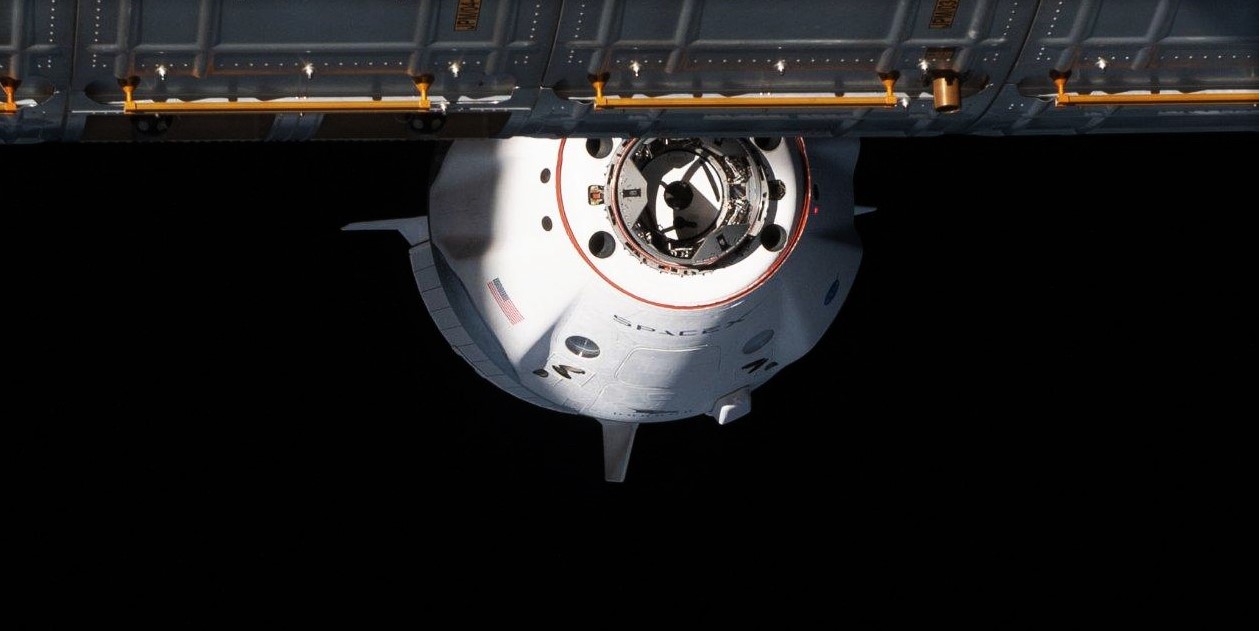
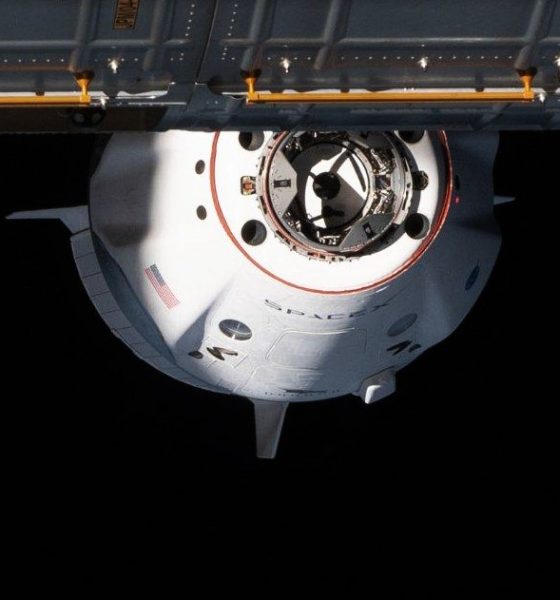
News
SpaceX private astronaut launch debut to reuse Crew-1 Dragon spacecraft
A former NASA astronaut now employed by Axiom Space says that SpaceX’s private astronaut launch debut will reuse the same Crew Dragon spacecraft currently supporting NASA’s Crew-1 mission in orbit.
Currently just a few weeks into a planned six-month stint in orbit, potentially marking the longest uninterrupted flight of an American spacecraft ever, Crew Dragon capsule C207 and an expendable trunk section arrived at the International Space Station (ISS) on November 16th. Known as Crew-1, the mission represents SpaceX and NASA’s commercial operational astronaut launch debut, carrying four astronauts to the ISS.
Crucially, the mission has been an almost flawless success so far and Falcon 9 has now completed four Crew Dragon launches without issue. On the Dragon side of things, the Crew-1 spacecraft performed a bit less perfectly than those tasked with flying Demo-1 and Demo-2, but SpaceX handled the minor issues that arose with the professionalism and composure of a team far more familiar with human spaceflight.
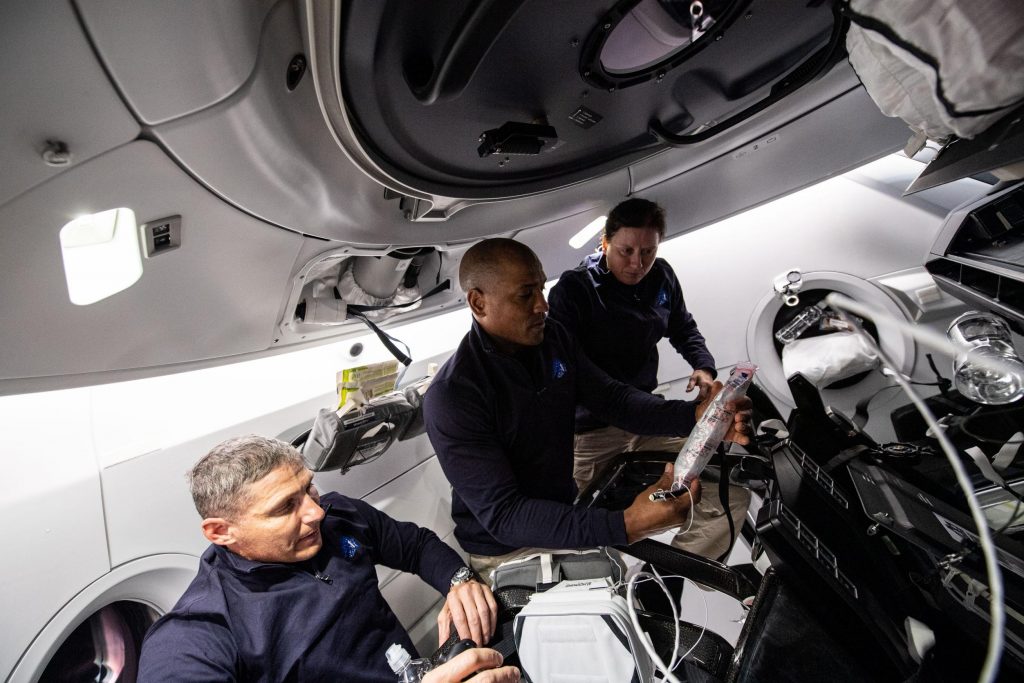
Early success aside, there is still some definite uncertainty ahead of Crew Dragon. While several Russian spacecraft have decades of experience spending at least several months at a time in orbit, a crewed US spacecraft has never spent more than 84 days in orbit. SpaceX itself actually beat out NASA to secure the second-place record with Crew Dragon’s 63-day Demo-2 astronaut launch debut, completed with a successful reentry and splashdown on August 2nd.
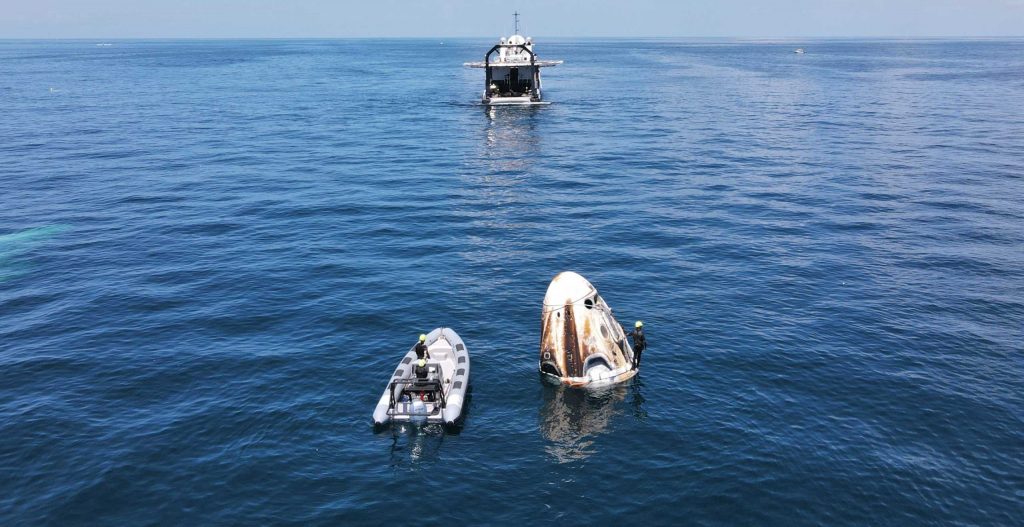
However, Crew-1 is expected to more than double that previous US record and almost triple SpaceX’s own second-place record, spending roughly 180 days (six months, give or take) in orbit. Barring an unprecedented space station or spacecraft emergency, Crew Dragon C207 will undock from ISS, reenter Earth’s atmosphere, and splashdown in the Gulf of Mexico or the Atlantic Ocean sometime in May 2021. Of course, as the first recoverable US spacecraft to spend anywhere close to that long in orbit, the Crew-1 Crew Dragon will be closely monitored to ensure the safety and reliability of its intricate reentry and recovery systems after some six months exposed to the extremes of space.
Still, success is by far the likeliest outcome. When Crew Dragon C207 splashes down, its four astronaut passengers will be carefully extricated and the inspection and refurbishment process will begin almost immediately thereafter. Crew-1 will technically be the second Crew Dragon spacecraft to be refurbished after an orbital spaceflight, following Demo-2 capsule C206’s inaugural Dragon 2 reuse perhaps just a month or two prior.
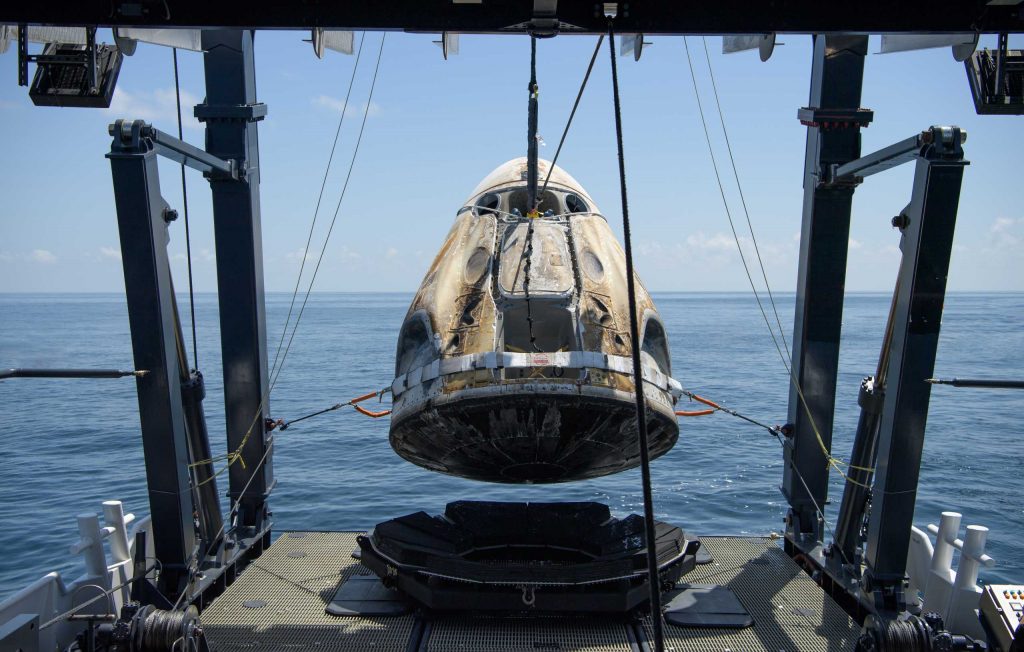
The Demo-2 Crew Dragon capsule is currently scheduled to fly a second time as early as March 31st, 2021 on SpaceX’s Crew-2 mission, ferrying another four astronauts to the ISS. If successful, Crew-2 will represent the first commercial astronaut launch ever to reuse both an orbital-class rocket booster and an orbital spacecraft, and the NASA-overseen process of refurbishment and re-flight will thus pave the way for future flight-proven astronaut launches. That includes private company Axiom Space’s first private AX-1 astronaut launch, which is currently scheduled to launch as early as Q4 2021.
AX-1 will be captained by former NASA astronaut Mike Lopez-Algeria and carry three other private astronauts, including Israeli multimillionaire Eytan Stibbe. SpaceX will thus be tasked with launching Israel’s second astronaut ever after Ilan Ramon was killed when a heat shield design flaw caused NASA Space Shuttle Columbia to break up during reentry in 2003.

Elon Musk
SpaceX’s Starship FL launch site will witness scenes once reserved for sci-fi films
A Starship that launches from the Florida site could touch down on the same site years later.
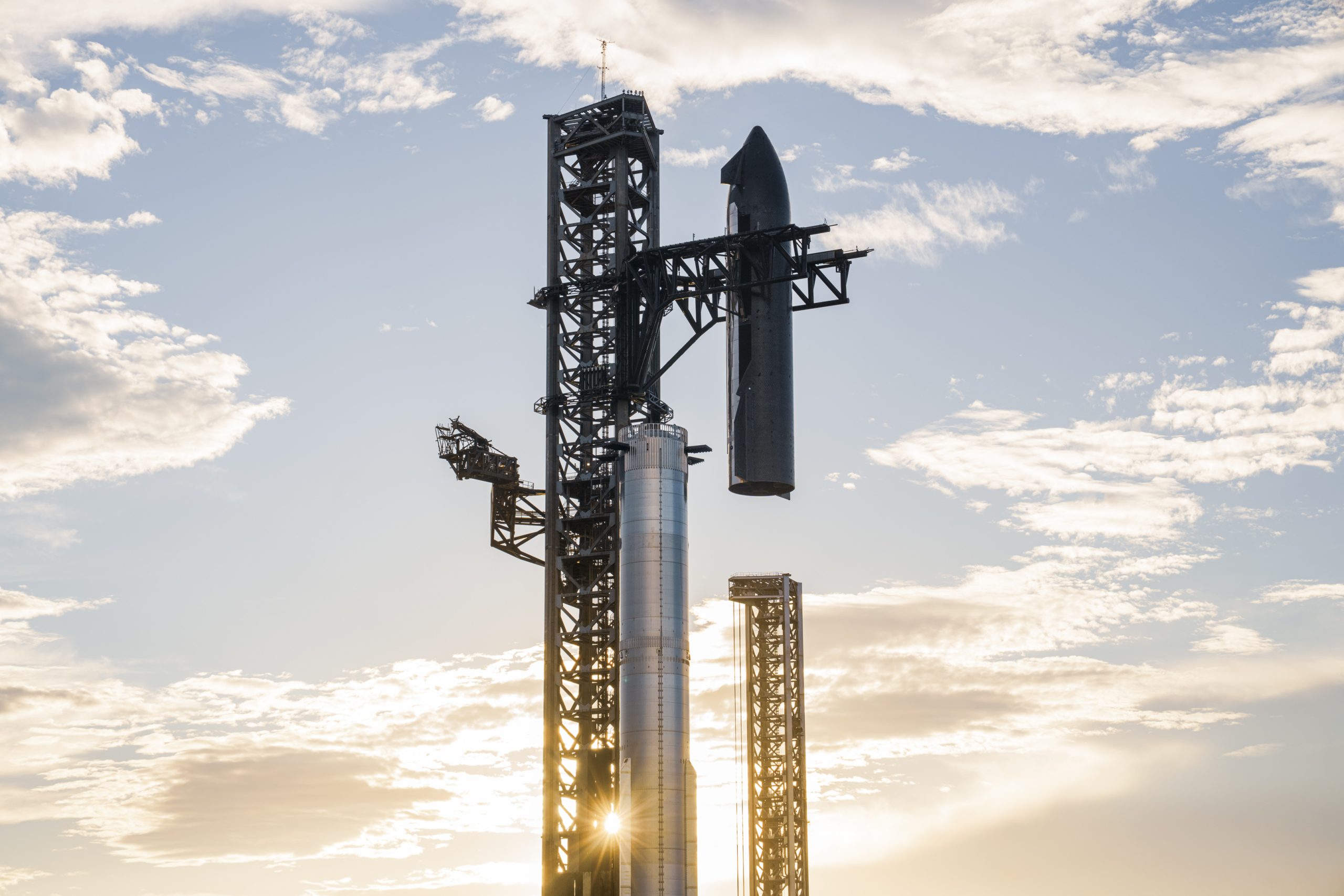
The Department of the Air Force (DAF) has released its Final Environmental Impact Statement for SpaceX’s efforts to launch and land Starship and its Super Heavy booster at Cape Canaveral Space Force Station’s SLC-37.
According to the Impact Statement, Starship could launch up to 76 times per year on the site, with Super Heavy boosters returning within minutes of liftoff and Starship upper stages landing back on the same pad in a timeframe that was once only possible in sci-fi movies.
Booster in Minutes, Ship in (possibly) years
The EIS explicitly referenced a never-before-seen operational concept: Super Heavy boosters will launch, reach orbit, and be caught by the tower chopsticks roughly seven minutes after liftoff. Meanwhile, the Starship upper stage will complete its mission, whether a short orbital test, lunar landing, or a multi-year Mars cargo run, and return to the exact same SLC-37 pad upon mission completion.
“The Super Heavy booster landings would occur within a few minutes of launch, while the Starship landings would occur upon completion of the Starship missions, which could last hours or years,” the EIS read.
This means a Starship that departs the Florida site in, say, 2027, could touch down on the same site in 2030 or later, right beside a brand-new stack preparing for its own journey, as noted in a Talk Of Titusville report. The 214-page document treats these multi-year round trips as standard procedure, effectively turning the location into one of the world’s first true interplanetary spaceports.
Noise and emissions flagged but deemed manageable
While the project received a clean bill of health overall, the EIS identified two areas requiring ongoing mitigation. Sonic booms from Super Heavy booster and Starship returns will cause significant community annoyance” particularly during nighttime operations, though structural damage is not expected. Nitrogen oxide emissions during launches will also exceed federal de minimis thresholds, prompting an adaptive management plan with real-time monitoring.
Other impacts, such as traffic, wildlife (including southeastern beach mouse and Florida scrub-jay), wetlands, and historic sites, were deemed manageable under existing permits and mitigation strategies. The Air Force is expected to issue its Record of Decision within weeks, followed by FAA concurrence, setting the stage for rapid redevelopment of the former site into a dual-tower Starship complex.
SpaceX Starship Environmental Impact Statement by Simon Alvarez
News
Tesla Full Self-Driving (FSD) testing gains major ground in Spain
Based on information posted by the Dirección General de Tráfico (DGT), it appears that Tesla is already busy testing FSD in the country.
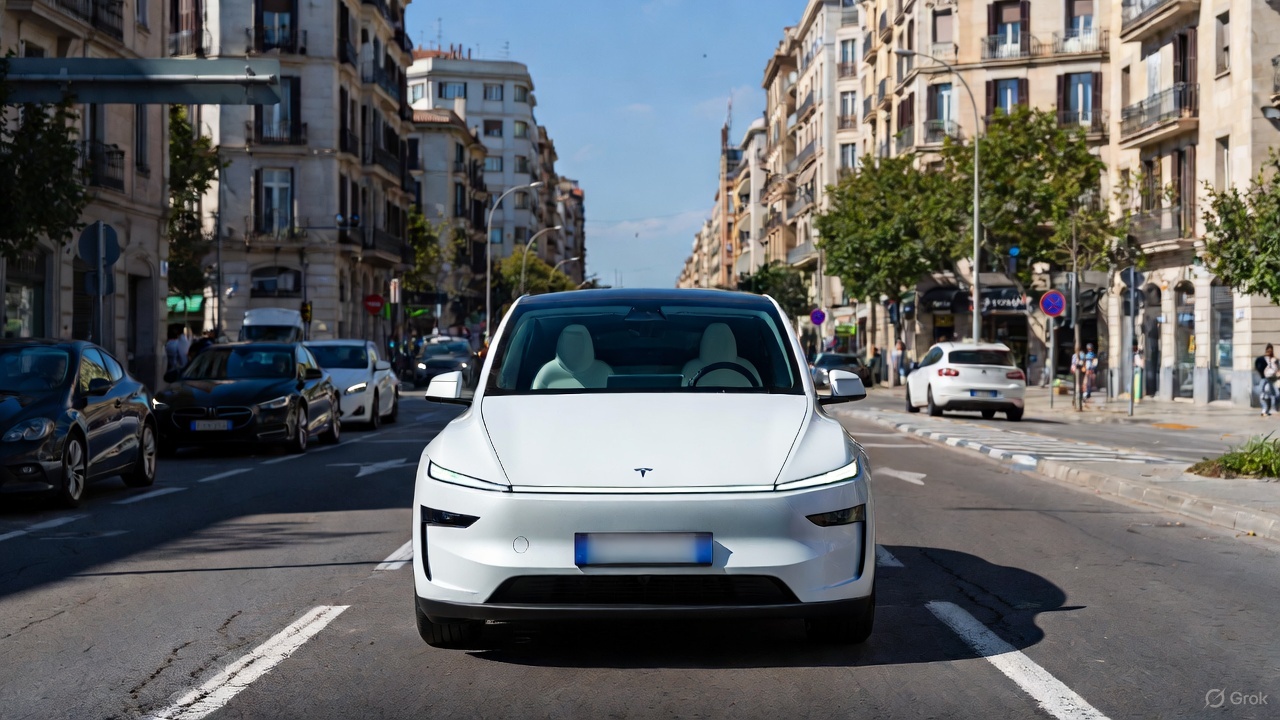
Tesla’s Full Self-Driving (Supervised) program is accelerating across Europe, with Spain emerging as a key testing hub under the country’s new ES-AV framework program.
Based on information posted by the Dirección General de Tráfico (DGT), it appears that Tesla is already busy testing FSD in the country.
Spain’s ES-AV framework
Spain’s DGT launched the ES-AV Program in July 2025 to standardize testing for automated vehicles from prototypes to pre-homologation stages. The DGT described the purpose of the program on its official website.
“The program is designed to complement and enhance oversight, regulation, research, and transparency efforts, as well as to support innovation and advancements in automotive technology and industry. This framework also aims to capitalize on the opportunity to position Spain as a pioneer and leader in automated vehicle technology, seeking to provide solutions that help overcome or alleviate certain shortcomings or negative externalities of the current transportation system,” the DGT wrote.
The program identifies three testing phases based on technological maturity and the scope of a company’s operations. Each phase has a set of minimum eligibility requirements, and applicants must indicate which phase they wish to participate in, at least based on their specific technological development.

Tesla FSD tests
As noted by Tesla watcher Kees Roelandschap on X, the DGT’s new framework effectively gives the green flight for nationwide FSD testing. So far, Tesla Spain has a total of 19 vehicles authorized to test FSD on the country’s roads, though it would not be surprising if this fleet grows in the coming months.
The start date for the program is listed at November 27, 2025 to November 26, 2027. The DGT also noted that unlimited FSD tests could be done across Spain on any national route. And since Tesla is already in Phase 3 of the ES-AV Program, onboard safety operators are optional. Remote monitoring would also be allowed.
Tesla’s FSD tests in Spain could help the company gain a lot of real-world data on the country’s roads. Considering the scope of tests that are allowed for the electric vehicle maker, it seems like Spain would be one of the European countries that would be friendly to FSD’s operations. So far, Tesla’s FSD push in Europe is notable, with the company holding FSD demonstrations in Germany, France, and Italy. Tesla is also pushing for national approval in the Netherlands in early 2026.
News
Tesla FSD V14.2.1 is earning rave reviews from users in diverse conditions
Tesla’s Full Self-Driving (Supervised) software continues its rapid evolution, with the latest V14.2.1 update drawing widespread praise.

Tesla’s Full Self-Driving (Supervised) software continues its rapid evolution, with the latest V14.2.1 update drawing widespread praise for its smoother performance and smarter decision-making.
Videos and firsthand accounts from Tesla owners highlight V14.2.1 as an update that improves navigation responsiveness, sign recognition, and overall fluidity, among other things. Some drivers have even described it as “more alive than ever,” hinting at the system eventually feeling “sentient,” as Elon Musk has predicted.
FSD V14.2.1 first impressions
Early adopters are buzzing about how V14.2.1 feels less intrusive while staying vigilant. In a post shared on X, Tesla owner @LactoseLunatic described the update as a “huge leap forward,” adding that the system remains “incredibly assertive but still safe.”
Another Tesla driver, Devin Olsenn, who logged ~600 km on V14.2.1, reported no safety disengagements, with the car feeling “more alive than ever.” The Tesla owner noted that his wife now defaults to using FSD V14, as the system is already very smooth and refined.
Adverse weather and regulatory zones are testing grounds where V14.2.1 shines, at least according to testers in snow areas. Tesla watcher Sawyer Merritt shared a video of his first snowy drive on unplowed rural roads in New Hampshire, where FSD did great and erred on the side of caution. As per Merritt, FSD V14.2.1 was “extra cautious” but it performed well overall.
Sign recognition and freeway prowess
Sign recognition also seemed to show improvements with FSD V14.2.1. Longtime FSD tester Chuck Cook highlighted a clip from his upcoming first-impressions video, showcasing improved school zone behavior. “I think it read the signs better,” he observed, though in standard mode, it didn’t fully drop to 15 mph within the short timeframe. This nuance points to V14.2.1’s growing awareness of temporal rules, a step toward fewer false positives in dynamic environments.
FSD V14.2.1 also seems to excel in high-stress highway scenarios. Fellow FSD tester @BLKMDL3 posted a video of FSD V14.2.1 managing a multi-lane freeway closure due to a police chase-related accident. “Perfectly handles all lanes of the freeway merging into one,” the Tesla owner noted in his post on X.
FSD V14.2.1 was released on Thanksgiving, much to the pleasant surprise of Tesla owners. The update’s release notes are almost identical to the system’s previous iteration, save for one line item read, “Camera visibility can lead to increased attention monitoring sensitivity.”









